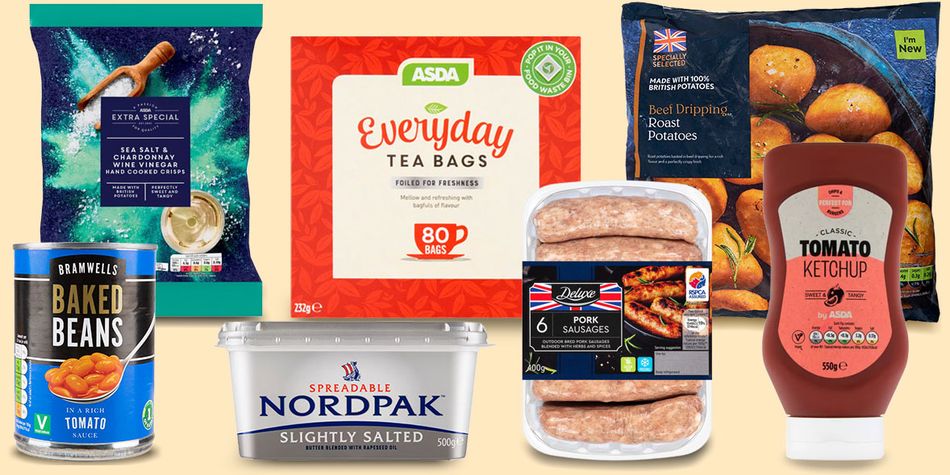By clicking a retailer link you consent to third-party cookies that track your onward journey. This enables W? to receive an affiliate commission if you make a purchase, which supports our mission to be the UK's consumer champion.
4 ways to save money on fruit and veg

Given that food prices are continuing to climb and grocery inflation has hit 15%, you may well be looking for new ways to reduce your food bill.
While you're probably aware of the benefits of eating plenty of fruit and vegetables, with the NHS stating they are a good source of vitamins and minerals, getting enough may be a challenge if money is tight.
Fresh fruit and veg may also be tricky to access right now, with shortages and buying restrictions in place at several supermarkets.
Here, Which? explains the simple steps you can take to help save money on fruit and veg, and outlines what's behind the current supermarket shortages.
1. Try ‘wonky’ fruit and veg
The number of people purchasing ‘wonky’ veg lines climbed by 19.3% last year, according to figures from market analysts Kantar. They not only offer a way of preventing food waste, but can be cheaper than their 'non wonky' alternatives.
Asda kickstarted the trend in 2016, when it introduced the box of veg in selected stores, which it said contained enough in-season veg and salad ingredients to feed a family of four for a week for £3.50. Asda said this was 30% cheaper than its standard pricing.
Tesco followed shortly after with its Perfectly Imperfect food waste-saving initiative. It sells packets of imperfect produce in stores and online, and said customers have bought 50m packs of fruit and veg from the range, saving 44,000 tonnes of food at risk of going to waste.
Discounter Aldi began stocking packets of misshapen fruit and vegetables as part of its Everyday Essentials in 2017.
The sale of imperfect produce boxes then caught on at Lidl. In 2022, the discounter started selling bundles of damaged, discoloured or deteriorated items that are still fOK to eat. The products in Lidl’s boxes, which are available at all its UK shops, change day-to-day depending on what’s available.
Waitrose then started relaxing its size and shape guidance on an array of fresh produce to support farmers who had been affected by the heatwave in the summer of 2022. The items come as part of Waitrose’s 'A Little Less Than Perfect' range.
Sainsbury’s is the latest supermarket to start stocking ‘wonky’ produce. It introduced £2 fruit & vegetable boxes earlier this month as part of its efforts to reduce food waste. The ‘Taste Me, Don’t Waste Me’ boxes were added to shelves at over 200 of its supermarkets this week, following a successful trial in January 2023. The boxes include a variety of surplus fresh fruit and vegetables and will be sold for a lower price to help ensure customers have access to affordable nutritious food, Sainsbury’s said.

- Find out more: best and worst supermarkets compared
2. Buy in-season fruit and veg
Putting produce in your basket that’s in-season not only means it’s fresh, but can help you save money, too.
The organisation Love British Food says any food in-season is cheaper because you’re buying it when ‘it is in abundance and it has not travelled a long way’, which means it ‘reduces the energy (and associated CO2 emissions) needed to grow and transport the food.’
Some of the fruits and veg in season at different times of the year include:
- Oranges: January-March
- Cauliflower: January-April
- Rhubarb: January-June
- Asparagus: June-July
- Carrots: June-September
- Tomatoes: June-October
- Broccoli: August-October
- Apples: September-February
- Leeks: September-March
- Pears: September-January
- Sweetcorn: September
The British Dietic Association (BDA) has a guide to seasonal fruit and vegetables if you want more information.
- Find out more: as Huel ads are banned over 'misleading' money-saving claims, Which? shares how you can eat healthily on a budget
3. Grow or pick your own produce
Rather than heading to the supermarket for your fruit and veg, growing your own could work out cheaper.
Some of the easiest fruit and vegetables to grow yourself include courgettes, potatoes and tomatoes.
If you have the time, energy and space in the garden or on a windowsill, growing your own fruit and veg can save you £12-£12.5 a kg when it comes to growing your own raspberries versus buying them at a supermarket, and you can save 45p per courgette by doing so, according to Which? research conducted in May 2022.
But it's not just money you will be saving by growing your own produce. Home-grown fruit and veg tastes better, as it can be cooked within minutes of harvesting. You'll also be able to ensure that your food is grown with limited chemical inputs.
While supermarkets tend to only stock packets of seeds in the spring months, local garden centres will have a selection year-round.
If you don’t have the space or time to grow your own produce, consider going to a ‘Pick Your Own’ farm, where you can choose your own fruit or veg - plus, it can be a fun day out.

- Find out more: how to save money by growing your own fruit and veg and the best compost to buy in 2023
4. Sign up to the Healthy Start scheme
If you're more than 10 weeks pregnant, or have a child under the age of four, you could get help from the government to buy healthy food and milk with the Healthy Start scheme.
If eligible, you’ll get a card with money loaded onto it that you can use at certain shops and supermarkets. The card can be used to buy milk, vegetables, pulses and infant formula. Sainsbury’s is currently topping up the government-funded NHS Healthy Start scheme by £2.
If you live in Scotland, you may be able to get help under the Best Start Foods scheme.
What’s happening with the fruit and veg shortage?

Aldi, Asda, Morrisons and Tesco have introduced purchase limits for some fruit and vegetables, as supermarkets face shortages of fresh produce.
Asda said it is capping sales of some items - including tomatoes, peppers and lettuce - at three each per customer, while Morrisons is has introduced limits of two on products like cucumbers in its stores.
Lidl, M&S, Sainsbury's and Waitrose have said they had no plans to ration fresh produce.
The shortages are largely the result of extreme weather in Spain and north Africa - which are where the UK imports around 95% of its tomatoes and 90% of its lettuces from in the winter months, according to figures from the British Retail Consortium (BRC).
The BRC says the shortages are expected to last ‘a few weeks’, until the UK growing season begins, and retailers find alternative sources of supply.
As well as the shortages, data from Nationwide Produce has found the cost for boxes of some vegetables are two or three times the typical price for this time of year.
- Find out more: tips for spending less at the supermarket



